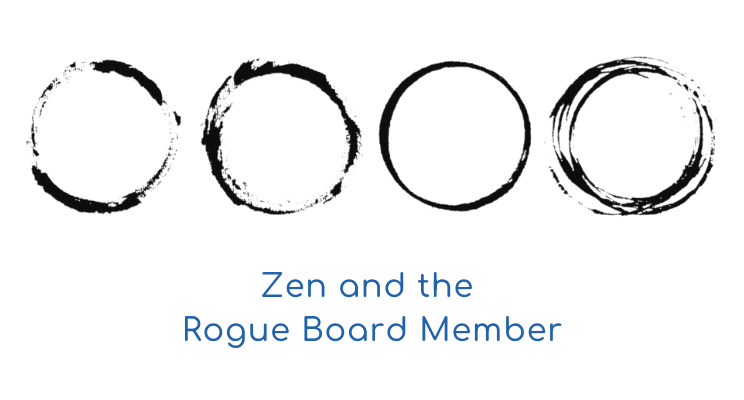“Is That So?” – a Zen Parable
A girl in the village was pregnant. Her angry parents demanded to know who the father was. At first resistant to confess, the anxious and embarrassed girl finally pointed to Hakuin, the Zen master whom everyone revered for living such a pure life. When the outraged parents confronted Hakuin with their daughter’s accusation, he simply replied, “Is that so?”
When the child was born, the parents brought it to Hakuin, who was now viewed as a pariah by the whole village. They demanded that he take care of the child since it was his responsibility. “Is that so?” Hakuin said calmly as he accepted the child.
He took very good care of the child for many months until the daughter could no longer withstand the lie she had told. She confessed that the birth father was a young man in the village whom she had tried to protect. The parents immediately went to Hakuin to see if he would return the baby. With profuse apologies, they explained what had happened. “Is that so?” Hakuin said as he handed them the child.
Zen and the Rogue Board Member
We frequently get calls for help from organization leaders who have a “rogue board member,” creating division and undermining the board’s functioning. While the organization leaders’ perspective is often accurate, we must examine the situation from within Hakuin’s question, “Is that so?”
Sometimes we’re not getting the full story.
In two recent cases, we discovered it wasn’t a single rogue member as presented but rather a relationship dynamic where the so-called problem individual was in direct conflict with another board member who had displayed equally challenging behavior. But in both situations, the other bad-behaving board member was an officer. Thus, while the parts they played in the conflict were roughly equal, the power dynamic was not.
The board sided with the officer in one case, even though the officer was the one who “drew first blood” by inappropriately insulting and yelling at the other board member. From that day forward, the non-officer board member felt (perhaps rightfully) aggrieved and began acting out in subsequent board meetings. The aggrieved board member became “the problem” while the officer’s counterproductive behavior was never called out, even though other board members conceded in confidence that it should have been.
In the business world, if two people are in conflict and one is the boss, the employee is generally at greater risk of status loss, punishment, or dismissal. The same dynamic should not be applied to a board of directors.
While titles carry special responsibility on a board, officers are not “above” other board members, which means a conflict with an officer in and of itself should not be characterized as “insubordination.”
A board’s authority is as a unit, not as individuals. Thus, the appropriate path for the rest of the board to take when two board members are in conflict – regardless of each person’s position on the board, including the chairperson – is to address their relationship with each other, not to take sides with one or the other.
Unfortunately, this rarely happens. Similar to the aftermath of a divorce, sides are usually chosen based on which individual people are closest to. Either the board member with the most allies prevails, or ongoing factionalism develops.
In our case examples, one board voted to remove the “problem” member; the other organization’s board was investigating how they could do the same.
Rather than address the root cause – the relationship – they instead chose to pick a winner and a loser. In a situation where there is not a single bad actor, punishing or banishing just one individual is unequal and disrespectful treatment.
But organizationally, this option may not be in the organization’s best interest as it solidifies poor behavior as acceptable to the surviving board member and reinforces an inappropriate power imbalance.
If you’re serving on a board facing challenging dynamics, see if you can check your emotions, reactions, and personal attachments at the door and simply ask – “Is that so?”
Need some additional tools? Our websites offer free guides, articles, and videos to help your board maximize its impact. Visit Leading Associations and World Class Boards. Or, Contact Us today if you feel your board’s challenges would benefit from experienced guidance. We can help!

